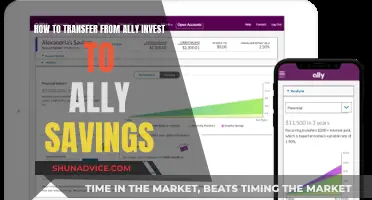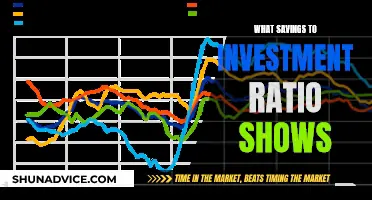
When it comes to investing in a 529 plan, there are several factors to consider, such as your savings goals, risk tolerance, and investment strategy. 529 plans typically offer different types of investment portfolios, including age-based, enrollment date, and static portfolios. Age-based portfolios are designed to become more conservative as the beneficiary nears college age, while static portfolios focus on a specific investment objective. It's important to choose an investment mix that aligns with your risk tolerance and financial goals, providing potential growth while managing market volatility risks. Understanding the various investment options available within 529 plans is crucial for making informed decisions about your savings strategy.
| Characteristics | Values |
|---|---|
| Investment type | Age-based and enrollment date portfolios, static portfolios, risk-based portfolios, guaranteed portfolio option |
| Investment management | Professionally managed portfolio, self-managed portfolio |
| Investment objective | Capital appreciation with reasonable safety of principle |
| Investment strategy | Aggressive growth, moderate growth, conservative |
| Investment options | Mutual funds, individual funds, static, age-based |
| Investment risk | Lowers with age of beneficiary |
What You'll Learn

Age-based and enrollment date portfolios
In the early years, the portfolio is typically more aggressive, with a higher allocation to stocks, which have the potential for higher returns but also come with higher risk. As the child gets closer to college, these portfolios shift away from riskier investments, such as equities (stocks), toward more conservative investments, such as bonds or money market funds. This shift to less-risky holdings helps protect against volatility and market downturns when college expenses are imminent.
Age-based portfolios are mapped to a beneficiary's year of birth and the approximate year the beneficiary is anticipated to start college. Each portfolio is managed with the asset allocation automatically becoming more conservative as the beneficiary nears college age.
An age-based investment glide path changes the percentage equity in a 529 plan investment by moving the money from one portfolio to another as the child grows older. The use of separate portfolios for each age band makes it easier to evaluate how the mix of investments changes. If the 529 plan’s investment manager decides to change the initial or final percentage equities, this will be easier to detect in an age-based investment.
Enrollment date portfolios, on the other hand, are based on the year the child will enter college. The asset allocation adjusts over the years to become more conservative as the enrollment year approaches. This is a great way to minimise risk as you get closer to using your account to pay for qualified education expenses.
Enrollment-date glide paths change the percentage equity in a single portfolio periodically. Some 529 plans claim that enrollment-date portfolios provide parents with more flexibility, letting them choose an enrollment year that matches their risk tolerance. An enrollment date further in the future will involve a higher percentage of equities.
The Perfect Investment Portfolio: Strategies for Success
You may want to see also

Static portfolios
When choosing a static portfolio, it is important to consider your investment goals, risk tolerance, and time horizon. Static portfolios may be suitable for investors who want to customise their investments and have more flexibility in their investment choices.
It is worth noting that static portfolios do not automatically adjust over time, so investors need to actively manage their investments and make changes if needed. Additionally, it is important to compare the fees associated with different 529 plans and investment portfolios to make an informed decision.
Investing: The Smart Way to Grow Your Money
You may want to see also

Risk Tolerance
Firstly, it is important to understand your own risk tolerance. Ask yourself how comfortable you are with risk. This will help determine the types of portfolios you should consider. If you are less comfortable with risk, you may want to consider a guaranteed portfolio option, which is a low-risk, conservative investment that seeks to preserve capital and provide a stable return.
Age-based portfolios are a common type of 529 investment portfolio. These are designed to automatically adjust the asset allocation based on the beneficiary's age, becoming more conservative as they near college age. This can help lower investment risk over time. Within these portfolios, there are different risk levels, from aggressive to moderate to conservative. Aggressive growth portfolios focus on higher returns but come with higher risk, while conservative portfolios focus on lower risk and more stable returns.
Static portfolios are another option. These remain the same over the life of the plan unless manually changed by the owner. These include target risk portfolios, which focus on a defined risk level such as "aggressive growth" or "income", and individual portfolios, which mirror an underlying mutual fund or exchange-traded fund.
When choosing a 529 investment portfolio, it is important to understand the level of risk involved and match it to your own risk tolerance and objectives. While higher-risk portfolios may offer the potential for greater returns, they also carry a higher chance of losing money. It is also important to remember that even within age-based portfolios, it is a good idea to regularly check in and re-assess whether the portfolio still aligns with your risk tolerance and financial goals.
Life Cycle Theory: Savings and Investment Strategies Explored
You may want to see also

Guaranteed Portfolio Option
The Guaranteed Portfolio Option is a conservative investment strategy that seeks to preserve capital and provide a stable return. This option is suitable for those with a short-term investment horizon or those looking for a low-risk investment. The objective is to maintain the funds you have accumulated rather than focus on getting big returns. This option is ideal if you are saving for college and want to protect your savings as your child gets closer to enrolment.
The Guaranteed Portfolio Option is a type of static portfolio, which means it focuses on achieving a specific investment objective. Unlike age-based portfolios, static portfolios do not automatically adjust over time unless the owner chooses to reallocate manually. This makes them more suitable for experienced investors.
The Guaranteed Portfolio Option is a low-risk investment strategy. The risk level is conservative, and the investment objective is to preserve capital and provide a stable return. The investment strategy involves allocating assets to a funding agreement with a minimum guaranteed rate of return. The minimum effective annual interest rate will be between 1% and 3%, and there is a possibility of additional interest being credited as declared by the insurance company. This interest rate is declared in advance for a period of up to 12 months and is not guaranteed for future periods.
The Guaranteed Portfolio Option is offered by ScholarShare 529, a 529 plan available to residents of California. It is important to note that California does not offer a state tax deduction for contributions to this plan. However, ScholarShare allows contributions of any dollar amount, making it easy for anyone to get started with saving for college.
When choosing a 529 plan, it is essential to consider your investment goals, risk tolerance, and time horizon. The Guaranteed Portfolio Option may be suitable for those with a short-term investment horizon or those who are risk-averse and want to preserve their funds. It is always a good idea to periodically review and re-evaluate your investment strategy as your goals and circumstances change.
Investing in New York's 529: A College Savings Guide
You may want to see also

Individual Fund portfolios
Fidelity, for example, offers a range of Individual Fund portfolios, including the Fidelity 500 Index Portfolio, the Total Market Index Portfolio, the International Index Portfolio, the Intermediate Treasury Index Portfolio, the Sustainable Multi-Asset Portfolio, the Bank Deposit Portfolio, and the Stable Value Portfolio. These portfolios offer a variety of investment options, such as equity, fixed income, money market, and bank deposit options.
When selecting an Individual Fund portfolio, investors can allocate money to any number of funds they prefer, typically in 5% increments that total 100%. It is important for investors to consider their goals, risk tolerance levels, and time horizons when choosing an Individual Fund portfolio.
It is worth noting that while Individual Fund portfolios provide customization options, investors should carefully consider the potential risks and returns associated with their choices. Consulting with a financial advisor or tax professional can help in making informed decisions about the specific Individual Fund portfolios offered by different 529 plans.
Diversifying Your Investment Portfolio: Strategies for Spreading Risk
You may want to see also







